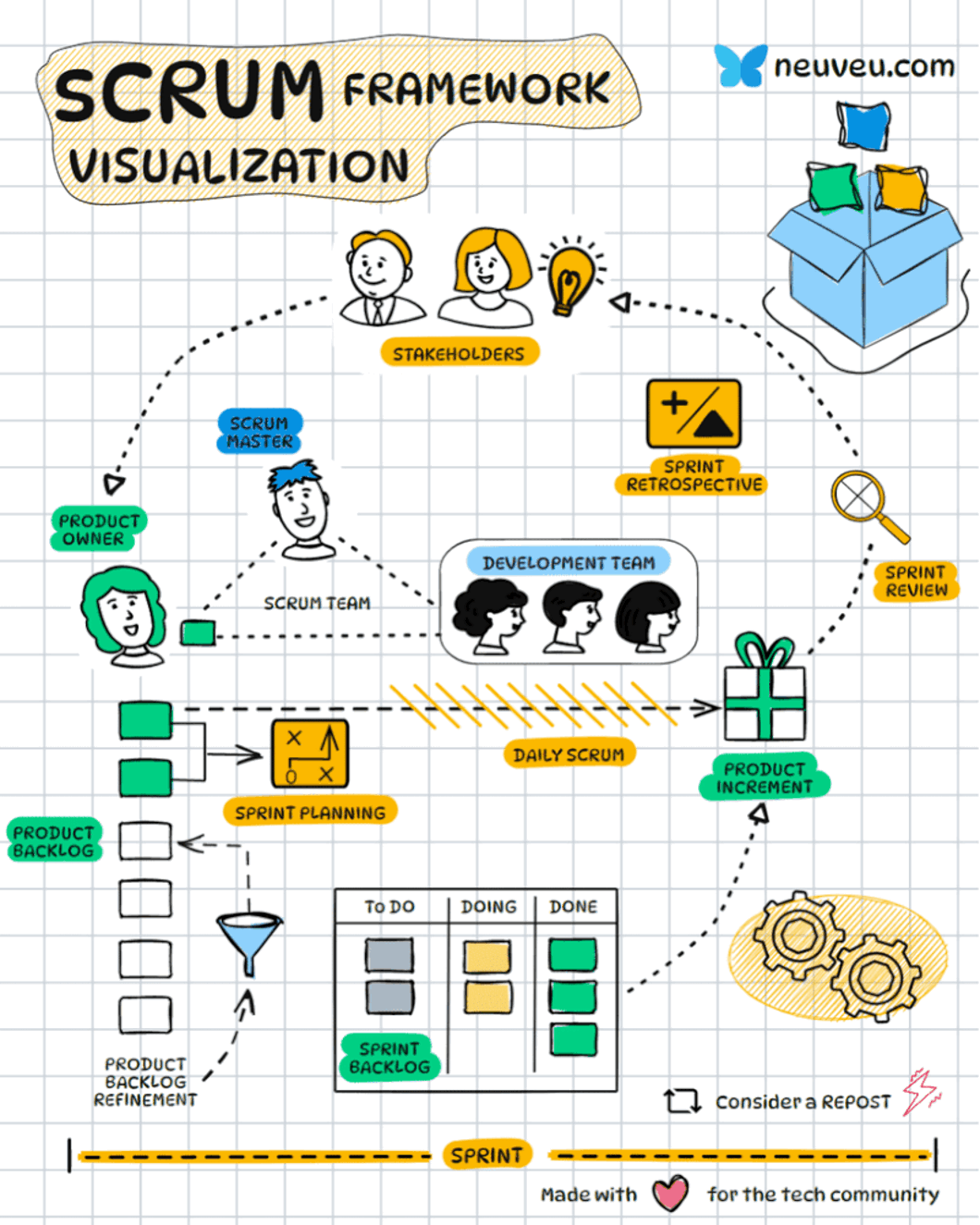Demystifying the Scrum Framework
The Scrum framework is an agile project management and product development approach that emphasizes collaboration, flexibility, and customer satisfaction. It is widely used in software development and has also been adopted in various other industries for managing complex projects. Here’s a detailed breakdown of the key elements of the Scrum framework:
- Scrum Team:
A small, self-organizing team consisting of 3-9 individuals, typically composed of a Product Owner, Scrum Master, and Development Team.
The Development Team carries out the work and is cross-functional, meaning it includes all the skills necessary to deliver the product increment.
- Product Owner:
Represents the customer or stakeholders and is responsible for defining and prioritizing the product backlog.
Ensures the team is building the most valuable features and user stories.
- Scrum Master:
Serves as a servant-leader, helping the team understand and apply Scrum principles.
Removes impediments, facilitates meetings, and ensures the team follows the Scrum process.
- Product Backlog:
A prioritized list of all the features, user stories, and tasks needed to complete the project.
Maintained and continuously refined by the Product Owner based on changing priorities and feedback.
- Sprint Planning:
At the beginning of each sprint, the team, including the Product Owner, selects items from the product backlog and creates a sprint backlog.
The team also agrees on a sprint goal during this meeting.
- Daily Scrum:
A short daily meeting (usually 15 minutes) for the Development Team to synchronize their work.
Team members discuss what they did yesterday, what they plan to do today, and any obstacles they’re facing.
- Sprint Review:
Held at the end of each sprint, the team presents the completed work to stakeholders.
Feedback is collected and used to adjust the product backlog.
- Sprint Retrospective:
Also held at the end of each sprint, the team reflects on their processes and identifies ways to improve.
Actions are taken to enhance team performance in the next sprint.
- Definition of Done (DoD):
A clear and agreed-upon set of criteria that a product increment must meet to be considered complete and potentially shippable.
- Burndown Chart:
A visual representation of the remaining work in a sprint, helping the team track progress.
Scrum promotes transparency, inspection, and adaptation throughout the development process. It is flexible and allows for changes to be made based on feedback and evolving requirements. By working in iterations and delivering potentially shippable increments of a product, Scrum aims to maximize customer value and minimize risk.


